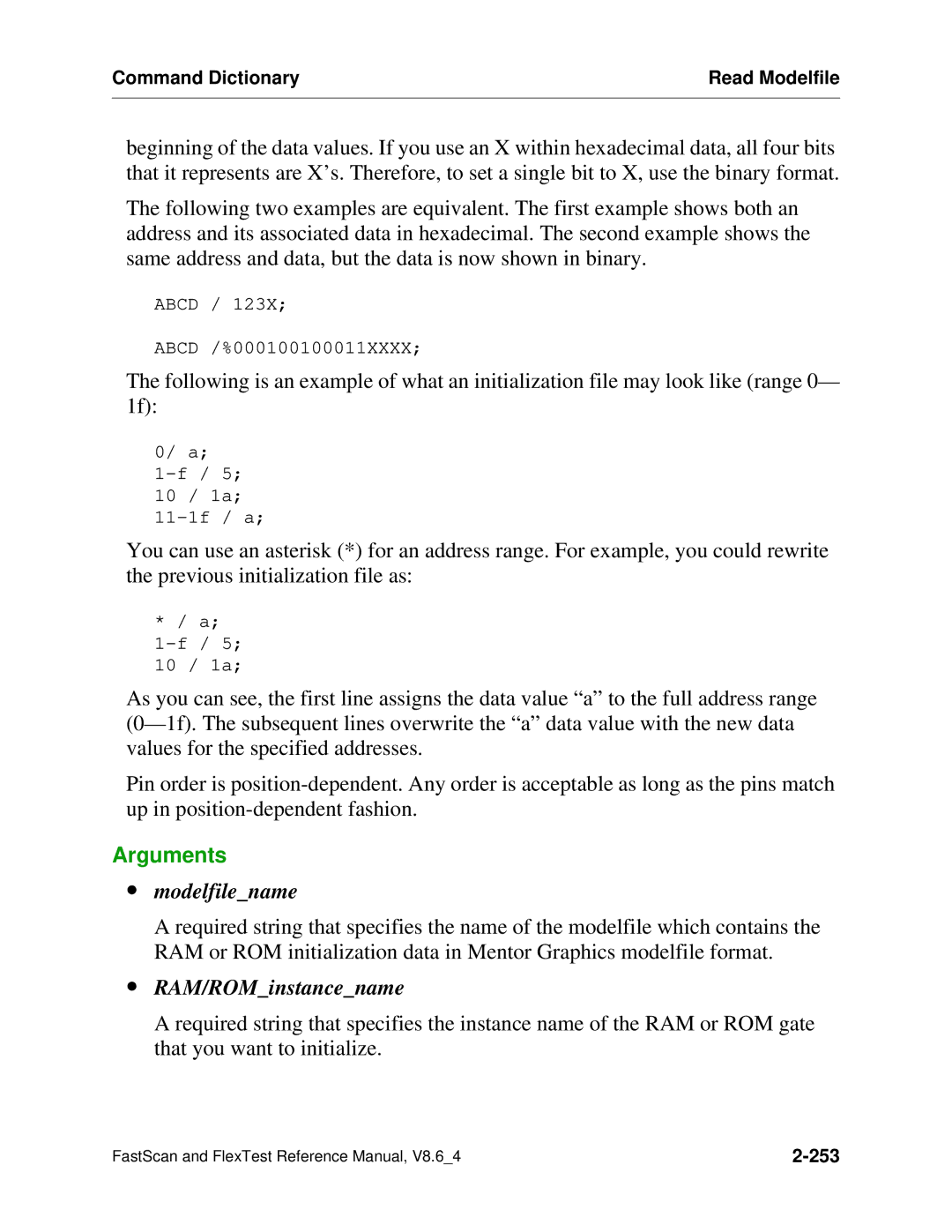Command Dictionary | Read Modelfile |
|
|
beginning of the data values. If you use an X within hexadecimal data, all four bits that it represents are X’s. Therefore, to set a single bit to X, use the binary format.
The following two examples are equivalent. The first example shows both an address and its associated data in hexadecimal. The second example shows the same address and data, but the data is now shown in binary.
ABCD / 123X;
ABCD /%000100100011XXXX;
The following is an example of what an initialization file may look like (range 0— 1f):
0/ a;
10 / 1a;
You can use an asterisk (*) for an address range. For example, you could rewrite the previous initialization file as:
* / a;
10 / 1a;
As you can see, the first line assigns the data value “a” to the full address range
Pin order is
Arguments
∙modelfile_name
A required string that specifies the name of the modelfile which contains the RAM or ROM initialization data in Mentor Graphics modelfile format.
∙RAM/ROM_instance_name
A required string that specifies the instance name of the RAM or ROM gate that you want to initialize.
FastScan and FlexTest Reference Manual, V8.6_4 |
